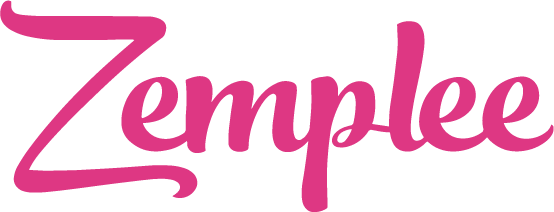Hypertension, or high blood pressure, is one of the most common chronic conditions among older adults. It’s often referred to as the “silent killer” because it can go unnoticed for years while quietly damaging blood vessels and vital organs.
As the global population ages, the risks of hypertension in the aging population are becoming a pressing public health issue. Studies show that more than 65% of individuals over age 60 are affected by this condition. If left untreated, hypertension can lead to serious outcomes like heart disease, stroke, vision loss, and kidney failure.
Why is Hypertension More Prevalent in Older Adults?
The increased incidence of hypertension in elderly adults is no coincidence. Several age-related physiological changes make older individuals more susceptible to elevated blood pressure:
1. Vascular Stiffening
With age, arteries lose their elasticity. Stiffened arteries require more force to circulate blood, naturally increasing blood pressure.
2. Reduced Kidney Function
Aging kidneys are less efficient at regulating salt and fluid balance, which can raise blood pressure.
3. Cumulative Lifestyle Factors
Over the decades, poor diet, inactivity, smoking, or excessive alcohol use can take a toll, compounding the risk.
4. Comorbidities and Medications
Chronic illnesses like diabetes, high cholesterol, and kidney disease—common in older adults—often coexist with hypertension. Additionally, certain medications prescribed for other conditions may inadvertently raise blood pressure.
The Importance of Blood Pressure Monitoring for Elderly Individuals
Early detection and ongoing blood pressure monitoring for elderly adults are critical. High blood pressure often presents no symptoms until complications arise, making regular monitoring vital to prevention and treatment.
Why monitor regularly?
- To catch sudden spikes due to medication changes or stress.
- To adjust treatments promptly before damage occurs.
- To assess the effectiveness of lifestyle modifications.
Smart home devices, wearable monitors, and remote healthcare platforms now offer safe and convenient ways to track blood pressure from home. For caregivers and families, these tools are invaluable for ongoing care.
Risks of Hypertension in the Aging Population
Unchecked hypertension in elderly adults can lead to several life-threatening complications:
- Heart disease: High blood pressure forces the heart to work harder, increasing the risk of heart failure and heart attacks.
- Stroke: Hypertension is a leading cause of both ischemic and hemorrhagic strokes.
- Cognitive decline: Studies have linked high blood pressure with an increased risk of dementia and Alzheimer’s disease.
- Kidney damage: Over time, high blood pressure can damage the kidneys’ filtering system, accelerating kidney failure.
- Vision problems: Hypertension can lead to hypertensive retinopathy and even blindness.
The longer hypertension remains uncontrolled, the greater the risks. That’s why early intervention and a proactive care plan are essential.
Actionable Tips to Lower Blood Pressure in Older Adults
While medication plays an important role in managing high blood pressure, lifestyle modifications are often the first line of defense—and they work remarkably well. Here’s what older adults and caregivers can do:
1. Follow a Heart-Healthy Diet
Embrace a balanced eating pattern such as the DASH (Dietary Approaches to Stop Hypertension) diet:
- Include: leafy greens, berries, oats, fish, and low-fat dairy.
- Limit: sodium (ideally below 1,500 mg/day), processed foods, red meats, and added sugars.
2. Engage in Regular Physical Activity
Exercise improves circulation, strengthens the heart, and lowers stress:
- Aim for 150 minutes of moderate activity weekly (e.g., brisk walking, water aerobics).
- For those with mobility issues, chair exercises or tai chi can be great alternatives.
3. Maintain a Healthy Weight
Even a modest weight loss of 5–10 pounds can significantly reduce blood pressure. Aim for slow and consistent progress instead of trying to lose weight quickly.
4. Limit Alcohol and Avoid Tobacco
- Alcohol: Women should limit alcohol to one drink daily, while men can have up to two.
- Smoking: Quit smoking to improve heart health and blood vessel function.
5. Practice Stress Reduction Techniques
Stress can cause temporary spikes in blood pressure and contribute to long-term elevation. Consider:
- Mindfulness meditation
- Breathing exercises
- Gentle yoga or prayer
- Regular sleep schedule
6. Adhere to Prescribed Medications
Never adjust or stop medication without consulting your healthcare provider. Combination therapy may be required to reach optimal control.
7. Routine Health Checkups
Consistent follow-up appointments with your healthcare provider are important for:
- Monitor blood pressure trends.
- Screen for other cardiovascular risks.
- Review medications for side effects or interactions.
Supporting Safe Blood Pressure Monitoring at Home
For caregivers and families, empowering seniors to monitor their blood pressure at home is one of the best tools for early intervention. Here’s how to ensure accuracy:
- Use an upper-arm cuff monitor approved by your healthcare provider.
- Measure at the same time daily, preferably after resting for 5 minutes.
- Maintain a record of your readings to discuss with your healthcare provider.
Technology from health monitoring platforms like Zemplee allows remote tracking of vitals, reminders for medications, and alerts for out-of-range readings—adding a vital layer of safety for seniors living independently.
A Compassionate Reminder: You’re Never Too Old to Start
Managing hypertension in elderly adults isn’t about drastic changes—it’s about steady, manageable improvements that add up over time. Whether it’s taking a walk, switching to a low-sodium diet, or learning how to meditate, every step counts.
Final Thoughts
The risks of hypertension in the aging population are serious, but not inevitable. With a combination of regular blood pressure monitoring for elderly, healthy lifestyle habits, and medical support, older adults can live longer, healthier, and more independent lives.
At Zemplee, we are committed to empowering families and caregivers with smart, supportive tools that enhance senior wellness. Because every elder deserves care that evolves with them.

